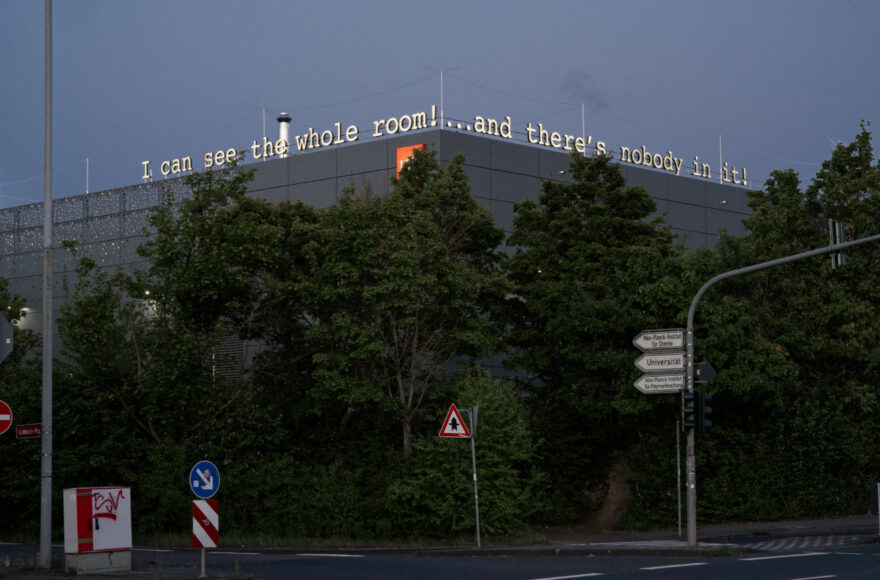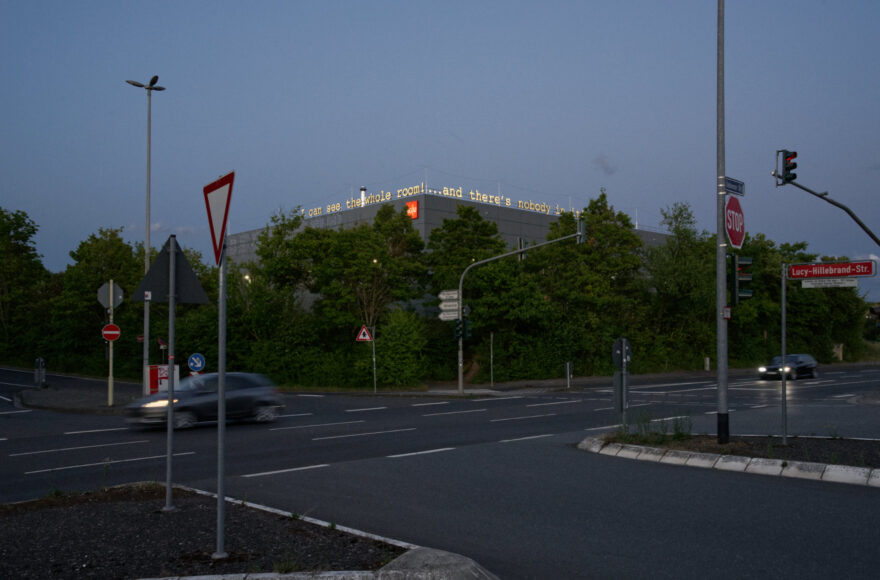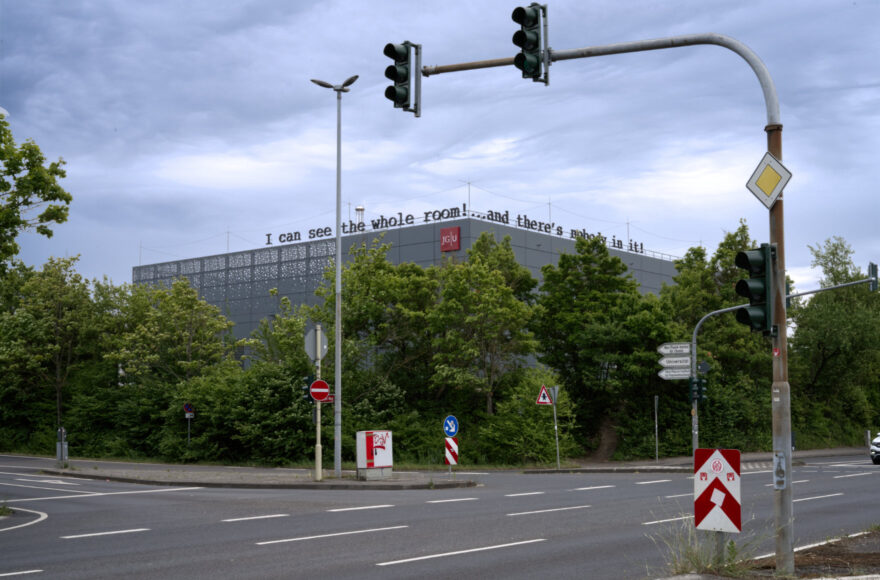Like a classic neon sign, the sentence: “I can see the whole room! … and there’s nobody in it!” is exposed, as the upper end on the roof edge of the newly built computer center of the Johannes Gutenberg University – the first part above the northwest facade and the second part of the sentence above the southwest side. During the day, the text appears dark like the façade against the sky; at dusk, the text glows a warm white. The typeface is a classic non-proportional font, Courier, originally designed by Howard Kettler in 1956.
The phrase quotes the image of a man looking out of a black canvas through a round hole from 1961 by Roy Lichtenstein. A speech bubble above it contains the sentence that the man is saying to someone. Roy Lichtenstein took the image from a Steve Roper cartoon by William Overgard from 1961, in which the sentence is preceded by “Trooper! …” as the person addressed. Like other works by Lichtenstein, it thematizes seeing, reading and recognizing through a technical apparatus and its uncertainty. Here, the text message stands as a luminous headline to the compact body of the computer center. The statement connects with the architecture and seems to question it.
But does “I can see the whole room / place!” only refer to the building or also to the immediate surroundings, the intersection or the landscape … and who could make such a statement from which point of view?
“room” means: space, chamber, place, scope, and in addition to an enclosed space, one also speaks of “room for improvement”, “room to move” or “room for hope” or “s. o. left no room for doubt”. Someone seems to have an overview of all this, but cannot see or recognize anyone and comes to the conclusion that this place is empty.
Commissioned by: the state of Rhineland-Palatinate, represented by Johannes Gutenberg University Mainz (JGU)
Design 2024, completion 2025
Photos: Thorsten Goldberg



